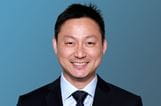SGCA limits rule against recovery of reflective loss
Related people
Headlines in this article
Related news and insights
News: 19 March 2024
A&O continues to be recognised for market-leading position in India
Publications: 06 September 2023
MAS finalises its policy position on the regulation of stablecoin-related activities
Publications: 17 July 2023
The Singapore Court of Appeal has significantly narrowed the scope of the rule against the recovery of “reflective loss”. The rule no longer applies to claims by creditors who are also shareholders (or, potentially previously, even if they are not). The ruling will be welcomed by creditors.
The rule against recovery of reflective loss - a reminder
A shareholder cannot bring a claim for a loss suffered by the company, for example damages based on the diminution in the market value of shares or a likely diminution in dividend. A shareholder’s loss is said to be merely a “reflection” of the loss suffered by the company, and the company (or its liquidator) is the proper claimant. The rule therefore bars shareholders from making such a claim.
The rule was first set out by the English courts in the case of Prudential Assurance v Newman Industries (No 2) in 1982. The rule has been accepted by the Singapore courts. Later courts in England and in Singapore stated that this rule should also extend to claims by shareholders in other capacities, for example, as employees or as creditors (see, for example, the English cases of Johnson v Gore Wood (2002) and Garner v Parker (2004) and the Singapore case of Townsing v Jenton Overseas Investment Pte Ltd (in liquidation) (2007)).
Holding company sues person who assisted in embezzlement of subsidiary’s funds
In Miao Weiguo v Tendcare Medical Group Holdings Pte Ltd & Anor (2021), Gong, a director of Tendcare Medical Group Holdings Pte Ltd (Tendcare), embezzled some USD4 million from it. The money was transferred to Tendcare’s wholly owned subsidiary and, via a sham lending agreement with Qian Hui Capital Limited, was funneled into and through various accounts before finally being deposited into Gong’s personal accounts.
Tendcare brought various claims, including one against Gong for breach of fiduciary duty. Its other actions also included one against Miao, the shareholder of Qian Hui Capital Limited who facilitated the transfer of funds from Tendcare’s subsidiary to his company. The claim was for dishonest assistance or knowing receipt of the USD4 m from Tendcare’s subsidiary. Miao’s defence was that as Tendcare’s claim arose from the loss caused to its subsidiary, it was prevented by the “no reflective loss” rule from suing Miao. Instead, the only proper claimant against him was the subsidiary. Unfortunately, the subsidiary had been wound up.
Court of Appeal – rule applies only to shareholders suing as shareholders
The Singapore Court of Appeal held that the “no reflective loss” rule only applied to shareholders claiming as shareholders, and did not apply where the claim arose from other non-shareholder bases. It definitively overruled its earlier decision of Townsing v Jenton Overseas Investment Pte Ltd as to the scope of the “no reflective loss” rule. It also held that the rule against double recovery was not relevant to the “no reflective loss” rule but was a principle that the court would apply practically as a matter of justice in determining the appropriate remedy or measure of damages.
The Court explained that the “no reflective loss” rule should be understood as a principle of company law only. Hence, it only applied to claims by shareholders qua shareholder for the diminution in their value of their shares or in distributions they receive as shareholders as a result of actionable loss suffered by their company. In reaching this decision, the Court considered the history of the principle of reflective loss, including the 2021 decision of the UK Supreme Court in Marex Financial Ltd v Sevilleja. The Singapore Court of Appeal essentially decided to follow the decision of the majority of the Supreme Court in Marex Financial Ltd v Sevilleja. Its reasons were as follows:
- The extension of the rule was too broad and it would be difficult to confine it to any particular set of circumstances without creating artificial rules on application.
- The basis for the “no reflective loss” rule was the role of shareholders in the company as seen by company law: shareholders are persons who have, by taking shares in a company, agreed to tie their fortunes to the company’s. If the company did not choose to sue the wrongdoer, the recourse of the shareholder was through company law remedies (e.g. removing the board or bringing a section 216 derivative claim).
- The rise and fall in value of the company’s shares was merely a natural incident of being a shareholder. This therefore provided the basis for determining the scope of the “no reflective loss” rule: it only applied to claims by shareholders qua shareholders. Accordingly, the rule on reflective loss is that it bars only claims by shareholders for the diminution in their value of their shares or in distributions they receive as shareholders as a result of actionable loss suffered by their company.
- Where shareholders bring a claim in other capacities, the “no reflective loss” rule did not bar their claim. The risk of double recovery (arising from a suit by the shareholder and the company it held shares in) could be amply addressed by the court using other legal tools. There are many of these, including simply awarding damages subject to a prohibition against double recovery. Which method is the most appropriate would depend on the claim and the facts of the case before it. However, there was no need to deal with the issue of double recovery by incorporating it as part of the rationale for the “no reflective loss” rule.
Singapore High Court allows claims by shareholder of joint venture company
Shortly after the Court of Appeal gave its decision in Miao Weiguo v Tendcare Medical Group Holdings Pte Ltd & Anor, the Singapore International Commercial Court issued its decision in the case of BCBC Singapore Pte Ltd & Anor v PT Banyan Resources TBK & Anor (2022) and applied the “no reflective loss” rule as set out by the Court of Appeal.
The facts there were in relation to a joint venture and are as follows:
- BCBCS and BR agreed to enter into a joint venture and executed a Joint Venture Deed.
- They incorporated a joint venture company, KSC, and became shareholders in the company.
- BCBCS provided shareholder loans to KSC.
- The joint venture failed and BCBCS brought a claim against BR for repudiation of the Joint Venture Deed and breaches of the loan agreements with KSC and BR under which BCBCS lent money to KSC.
- It claimed as damages the moneys lent to KSC on the basis that these were wasted expenditure.
- It also claim damages against BR for loss of expectation of profits.
- BR’s defence was that the rule on reflective loss applied to bar the claim.
Following Miao Weiguo v Tendcare Medical Group Holdings Pte Ltd & Anor, the High Court held that:
- BCBCS’ claims pursuant to the loan agreements were made by it qua creditor of KSC, and
- BCBCS’ claims pursuant to the joint venture deed were made in respect of its expectation losses as a result of BR’s breaches of its joint venture obligations and not for any diminution in value of its shareholding in KSC or distributions which it is entitled to receive as shareholder of KSC.
Comment
The “no reflective loss” rule had, over time, been expanded in both England and Singapore to potentially bar claims not just by a shareholder, as shareholder, but also to other types of claims and claimants, for example, employees and creditors. As noted by the Singapore Court of Appeal, the extension of the principle has been criticized as having “the potential to have a significant impact on the law and on commercial life”. The decision by the Court of Appeal in Miao Weiguo v Tendcare Medical Group Holdings Pte Ltd & Anor not only puts a welcome halt to the worrying trend, but also reverses it.
Some uncertainty still remains, however, as to how claims are to be characterised. For example, in BCBC Singapore Pte Ltd & Anor v PT Banyan Resources TBK & Anor, the claim of expectation losses was for damages for the loss of a chance to realise profits from the operations that would have been conducted by the joint venture company. The Singapore High Court did not discuss why it was of the view that the claim did not amount to effectively seeking in substance distributions that the claimant should have received as a shareholder of the joint venture company. How the character of the claim being made is to be determined by the courts -- whether it is in substance one that is or is not referable to share value or distributions – may therefore have to wait for another day.





